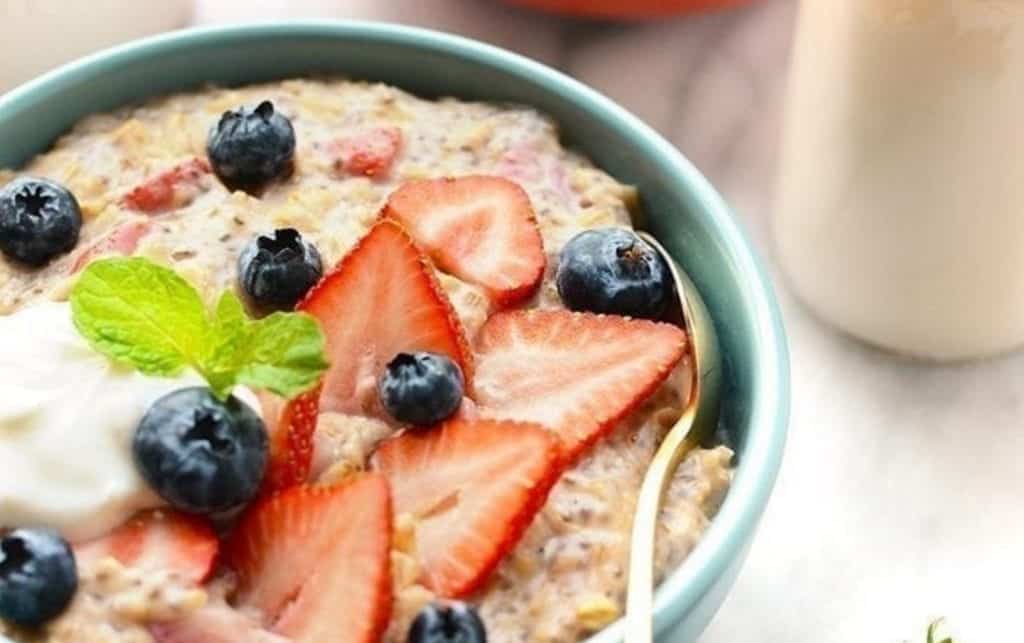
If you’re like many people on a weight loss journey, there’s a chance you’re cutting more calories than you need to.
When you start a weight loss journey, it can be tempting to drastically cut calories to reach your goal faster, but that can be counter productive.
In fact, 1,200, 1,500, or even 2,000 calories may not be enough for some people, depending on their starting weight and lifestyle. If you have a physically active job such as a nurse or construction worker, you’ll likely need to eat more than someone who sits all day.
For example, many people believe they need to adhere to a 1,200 calorie diet to lose weight. But that’s not entirely true. “It may be possible to meet your minimum nutritional needs on 1,200 calories a day, but that doesn’t mean it’s easy to do, or that doing it would be ideal,” says Stephanie Nelson, lead nutrition scientist at MyFitnessPal.
“It’s quite a difficult jigsaw puzzle to get all your nutrients in at that low-calorie level,” she says.
What to Know About Setting a Calorie Goal That’s Too Low
According to Nelson, these are some of the most important reasons to consider setting a higher calorie goal. These are the main reasons a too-low-calorie diet could potentially derail your weight loss journey.
1. It isn’t flexible
While a low calorie goal of 1,200 calories might technically be enough to keep you from developing nutrient deficiencies, it might not leave much room for flexibility in your diet.
“The more calories you have to work with, the easier it is to get all the nutrition you need because you can include a wider variety of foods,” says Nelson.
Plus, a 1,200 calorie target is just unnecessarily hard. It doesn’t leave you the room to have an ice cream on a summer day or a slice of cake at a party. If your calorie goal doesn’t leave you the flexibility to live your life, you’re unlikely to stick with it.

You might also like
2. It can lead to muscle loss
One of the biggest issues with setting a calorie goal as low as 1,200 is that it often leads to muscle loss in addition to fat loss.
“Whenever you’re in a caloric deficit, your body is going to break down fat for energy—but it doesn’t just stop there. It will also break down muscle,” says Nelson. “And the more aggressive your calorie deficit, the more likely you are to lose muscle mass along with fat.”
To avoid this, Nelson suggests cutting back the number of calories you usually eat modestly.
“We’ve found through research that the maximum calorie deficit you can have without risking significant muscle loss is about 500 calories per day,” she says. “A higher calorie goal makes it easier to maintain your muscle mass while still losing fat.”
3. It requires drastic changes
If you set a calorie goal that’s too low, you may need to radically change the way you eat overnight. The average North American eats 3,540 calories per day according to United Nations data. Imagine what you’d need to do to cut your daily intake in half or more.
When it comes to weight loss, small changes and a slow-and-steady approach is probably better than drastic calorie cuts for most people. And the data shows it! More than half of MyFitnessPal members who reported achieving at least 90% of their goal weight lost less than 1 pound per week on average.
“Instead of overhauling your entire diet all at once, try making gradual adjustments,” Nelson suggests. “For example, you might swap out a soda for sparkling water or cut back on the amount of peanut butter you’re using in your sandwich.”
4. It can affect your hunger hormone levels
You already know when you don’t eat enough, you get hungry. But it’s not your lack of willpower that’s to blame—it’s likely hormonal.
“When you cut calories too much, your body’s hunger hormones go into overdrive, making you feel hungrier than usual,” she explains. “These hormonal changes can persist for up to a year after you stop your calorie deficit, making it even harder to maintain your weight loss in the long run.”
Nelson also notes that a less aggressive calorie deficit can also help prevent hormonal imbalances that can subconsciously ramp up your appetite.
About the Experts:
Joy Manning is a health journalist and a former nutrition editor for Prevention magazine. Her writing has appeared in many publications, including Men’s Health, Eating Well, Shape, and Web MD.
Stephanie Nelson (MS, RD) is a Registered Dietitian and MyFitnessPal’s in-house nutrition expert and nutrition scientist. She graduated from San Diego State University with a focus on research and disease prevention.
How to Choose the Right Calorie Goal for You
So, how do you go about setting a calorie goal that’s right for you? As always, you should consult with your physician before starting any diet or exercise routine. Nelson also suggests getting a baseline understanding of your current calorie intake by downloading the MyFitnessPal app.
Track your meals and snacks
To set a goal, you need to understand your starting point. “Track your meals and snacks for at least a week, including both weekdays and weekends, to get a good representation of your eating habits,” Nelson advises. “From there, you can begin to make adjustments—starting with a small reduction of 200 calories per day.”
You’ll start losing weight when you reduce your calories enough to enter a calorie deficit. That just means you’re eating fewer calories than your body needs in a day.
Fun fact: MyFitnessPal gives members access to one of the world’s largest nutritional databases. Track your calories in the app.
“Common estimations say that a calorie deficit of 500 calories per day is about one pound weight loss per week, but that’s actually quite aggressive,” says Nelson.
Remember, weight loss isn’t one-size-fits-alls. “For people with obesity, one pound per week or a 500 calorie deficit is appropriate,” says Nelson.
But if you don’t have obesity? “I would suggest a 250 calorie deficit, or half-a-pound per week.” In either situation, your calorie goal will likely be above 1,200, says Nelson. You can manage your weight loss rates in your Goal settings in MyFitnessPal.
Prepare for plateaus
When you’re deciding on a calorie goal, it’s a good idea to anticipate weight loss plateaus. That’s when your progress seems to stall despite your best efforts. Nelson says that setting a higher calorie goal from the beginning can help you navigate this situation.
If you do hit a plateau and you’re working with a small to medium calorie deficit, you have more options compared to people who cut their calories to the bone from the outset. “You have wiggle room to make adjustments without dropping to an unsustainable calorie level,” Nelson explains.
Consider maintenance
Reaching and maintaining a healthy weight is a lifetime journey. Today, you might be focused on weight loss, but how many calories you eat now can affect how successful you are at maintaining your weight loss later.
When you eat more than 1,200 calories, you’re more likely to avoid the pitfalls that come with rapid weight loss—including a slower metabolism and heightened hunger, even after you’ve achieved your goal.
Establish sustainable habits now that will serve you later on, like tracking. “One big predictor of weight loss success is continuing to track after you’ve lost weight,” Nelson says. It helps you stay accountable and avoid gradually slipping back into old habits.
The Bottom Line: Setting the Right Calorie Goal Is Essential For Weight Loss Success
While a low calorie diet might seem like a quick fix, it’s often too low to provide the nutrients your body needs. It can also leave you too hungry and discouraged to keep trying.
By making small, consistent changes and giving your body the nutrition it needs, you’ll be more likely to maintain a healthy weight.
How MyFitnessPal Can Help
When you create your profile, we ask you for your age, height, weight, sex, and normal daily activity level. We use these in combination with other factors to determine the calories required to maintain your current weight.
We also ask how much weight you would like to lose or gain per week, and with this goal in mind we subtract calories (for weight loss) or add calories (for weight gain) to determine your daily calorie and nutrient goals.
As you log your meals, the app visualizes how many calories you’ve consumed with each snack or meal! These insights can help you make gradual adjustments that support your weight loss goals.
The post Why Choosing The Right Calorie Goal Is Important For Weight Loss appeared first on MyFitnessPal Blog.




